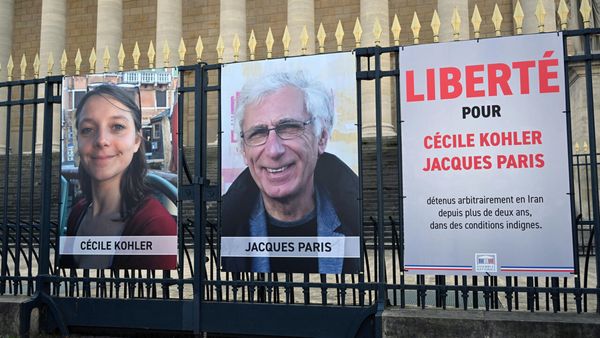
King Charles III has commissioned a special screen that will give him even more privacy than his predecessors during the most sacred part of his Coronation.
His Majesty will be surrounded on three sides by the embroidered anointing screen, when he is anointed with holy oil.
It has been created by a team of more than 150 people over the past few months to a Commonwealth-themed design by the iconographer Aidan Hart selected by the monarch.
With the open side facing the High Altar, the King will be out of sight of the congregation inside Westminster Abbey for his private moment with God in a way that his mother and grandfather were not at their coronations when they were anointed beneath a canopy that left them visible to all around them.
Nick Gutfreund, who led the project to build the screen, said: “The screen is there to actually provide privacy to the most sacred part of the ceremony. And previously it was a canopy over the top, which actually didn’t provide real privacy. It was more figurative. Now this three-side screen provides absolute privacy during the process.”
Mr Hart was asked by the King to take inspiration from the Golden Jubilee stained glass window at the Chapel Royal, St James’s Palace, which depicts the “family of nations” as a thriving tree.
Mr Gutfreund described organising the Royal School of Needlework, livery companies and fabric firms - including one using machines to embroider parts of the design - as a “privilege and absolute pleasure”.

Before the crowning and out of sight behind the tree-sided screen, the Archbishop of Canterbury, Justin Welby, will anoint Charles making the sign of the cross on his hand, breast and head with holy oil - regarded as a deeply spiritual moment for a monarch.
The main panel of the screen, which will face the congregation, features a tree with the names of the Commonwealth’s 56 member states embroidered onto individual leaves, while the two side screens feature an embroidered cross. All screens are 2.6 metres high and 2.2 metres wide.
A dove is in the topmost branches and either side of the tree is a trumpet-blowing angel representing heaven and earth brought together, and at the root is the cypher of the King who serves the Commonwealth and its people.
Birds are seen in the branches and roses are dotted among the leaves denoting growth and in the sky is a stylised sun which gives life to planet earth.
Embroidered at the bottom is the quotation “All shall be well, and all manner of thing shall be well” from the medieval mystic Julian of Norwich, the author of the earliest surviving book in the English language written by a woman.
Mr Hart, who lived as a hermit in Shropshire for six years before marrying, specialises in painting and sculpting sacred icons and drew on the stained glass window that marked the 50th year of the late Queen’s reign.
He said: “The inspiration of the Chapel Royal stained-glass window was personally requested by His Majesty the King.
“Each and every element of the design has been specifically chosen to symbolise aspects of this historic coronation and the Commonwealth, from the birds that symbolise the joy and interaction among members of a community living in harmony, to the rejoicing angels and the dove that represents the Holy Spirit.”
Some of the 150 people involved in creating the screen, gifted by the City of London Corporation and participating Livery Companies, attended a short service of dedication at the Chapel Royal when the screen was blessed on Monday.
In March, Charles saw the screen being embroidered during a private visit to the Royal School of Needlework based at Hampton Court Palace with the Queen Consort, the institution’s patron.
Mr Gutfreund, a cabinet maker from the Worshipful Company of Carpenters, created the screen’s pole frame which is topped by two gilded eagles, a reference to the eagles embroidered on the canopy used by Queen Elizabeth.
The military will play a part, and the screen will be carried by six servicemen from regiments of the Household Division holding the Freedom of the City of London - a Trooper from the Life Guards and a Guardsmen from each of the Grenadier, Coldstream, Scots, Irish and Welsh Guards.
Modern technology was used to help speed up the process with London-based company Digitek using embroidery machines to create the outline of the tree and the trunk with sustainable thread, while the cloth was made from Australian and New Zealand wool woven and finished in UK mills.
Anne Butcher, head of studio and standards at the Royal School of Needlework (RSN), described how RSN students, staff and the Livery Companies of the Broderers, Drapers and Weavers were involved in embroidering country names onto leaves.
She added: “They all came back to us to be assembled onto the tree, so that was the really important collaborative part of the process, and it was just amazing to be working with so many people - so we think probably about 150 have been involved.”







